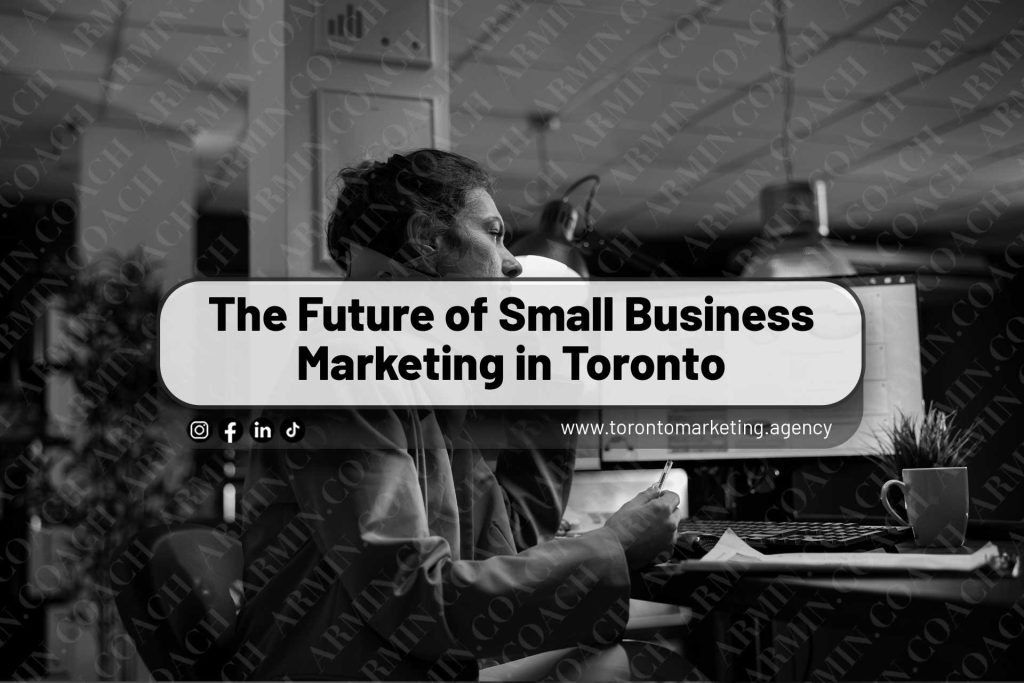In a dynamic city like Toronto, where diversity, competition, and innovation converge, building a strong, recognizable brand is not just a “nice-to-have” it’s essential for survival and growth. Whether you’re launching a startup in the Distillery District, operating a boutique in Yorkville, or running a tech firm in the Innovation Corridor, marketing in Toronto demands both creativity and precision.
This in-depth article explores how to build brand awareness through marketing in Toronto. You’ll discover local-specific tactics, case studies, cost comparisons, challenges, and answers to frequently asked questions. By the end, you’ll have a robust roadmap to raise your brand profile in Canada’s largest and most competitive market.
1. What Is Brand Awareness: And Why It Matters in Toronto
Brand awareness refers to how familiar people are with your brand name, logo, voice, and offerings. It’s the foundation of brand equity: the more people recognize you positively, the easier it becomes to attract leads, referrals, and loyalty.
In Toronto, where countless new businesses sprout weekly and consumer choices abound, brand awareness is not optional—it’s strategic. You want to be the name that comes to mind when someone in Midtown Toronto thinks of “best café nearby,” “local fashion boutique,” or “digital marketing agency Toronto.”
“Marketing in Toronto” is a constant push to differentiate, engage, and remain top-of-mind amid noise.
1.1 Why Brand Awareness Is a Competitive Advantage
- Barrier to competition: A known brand is harder to unseat.
- Faster conversions: If users recognize you, the trust hurdle is lower.
- Word-of-mouth and referrals: Recognizable brands are easier to share.
- Easier scaling: Once your brand is established, campaigns have higher baseline lift.
In Canada, branding factors resonate deeply: 88% of Canadian consumers say authenticity is a key factor in which brands they like, and 71% emphasize consistency as essential when staying with a brand. Made in CA
Thus, a well-executed brand awareness strategy in Toronto can provide a sustainable edge.
2. The Unique Dynamics of the Toronto Market
You can’t treat Toronto like any other city. Its scale, diversity, media landscape, and consumer expectations make “marketing in Toronto” uniquely challenging and rewarding.
2.1 Demographics & Diversity
Toronto is among the world’s most multicultural cities. With over half of its population born outside Canada, multilingual messaging, culturally inclusive branding, and segmentation strategies matter more here than in homogeneous markets.
2.2 Saturated Media Environment
Billboards, transit ads, social media campaigns, events, influencers Toronto is saturated with marketing. Cutting through that clutter requires bold identity, smart placement, and authenticity.
2.3 Digital Maturity & Audience Expectations
Torontonians are digitally savvy. According to a report, the Canada digital marketing market was valued at USD 14.01 billion in 2024 and is projected to grow at a CAGR of 13.45% to 2034. Claight Nearly all Canadian businesses use social media; an estimated 94% of small Canadian businesses leverage it for marketing. tectera.com
That means your brand needs to compete in channels like Instagram, TikTok, local blogs, podcasts, and more not just traditional media.
2.4 Experiential Expectations
Consumers here expect immersive, real-world brand encounters. Toronto-based experiential marketing is robust, offering pop-ups, installations, festival tie-ins, and street activations to bring brands to life. peakt.com
3. Core Strategies to Build Brand Awareness in Toronto
To build meaningful awareness, your strategy must combine multiple tactics, both digital and physical, tailored to Toronto’s environment.
3.1 Define a Distinct Brand Identity
Before executing campaigns, you need a clear identity:
- Brand purpose and values: What does your brand stand for? E.g., sustainability, local craft, inclusivity.
- Visual identity: Logo, color palette, typography, and imagery. Using signature colors can increase brand recognition by up to 80%. Made in CA
- Tone & voice: Are you playful, authoritative, educational, community-first?
- Brand messaging pillars: Key messages aligned to customer pain points.
Because most impressions happen in milliseconds, your visual and textual brand differentiators must register fast and memorably. Made in CA
3.2 Local SEO & Search Presence
For marketing in Toronto, local SEO is foundational:
- Claim and optimize Google Business Profile (GBP) with accurate contact, hours, images, posts, and reviews.
- Create local landing pages (e.g., “digital marketing services Toronto,” “Toronto boutique fashion”).
- Use Toronto-based keywords in titles, meta descriptions, content.
- Acquire local backlinks (blog features, Toronto press, local directories).
- Encourage reviews from Toronto customers to boost reputation.
3.3 Content Marketing & Thought Leadership
Create content that resonates with Toronto audiences:
- Local stories neighborhood guides, Toronto trends, interviews with Toronto influencers.
- Data reports or insights if you can publish a Toronto-specific marketing report, that elevates authority.
- Long-form pillar content optimized for SEO, interlinked with local pages.
- Guest posts on Toronto blogs, media sites, industry publications.
Over time, your content becomes the beacon that brings Toronto users to your brand first.
3.4 Social Media Strategy Focused on Toronto
A posting schedule isn’t enough social media for brand awareness in Toronto requires:
- Hyperlocal posts: show local spots, Toronto life, community events.
- Collaborations and shout-outs: with Toronto-based micro-influencers, businesses, artists.
- User-generated content campaigns: ask Toronto customers to share with your hashtag.
- Geo-targeted paid social campaigns: even modest budgets focusing on Toronto neighborhoods can deliver awareness.
The fact that most Canadians are online 96% according to some data magnifies the impact of social media efforts. Asset Digital Communications
3.5 Paid Advertising & Retargeting
Brand awareness isn’t just organic. Thoughtful ad strategies help accelerate visibility:
- Display & video ads optimized for broad reach. Use Toronto-centric visuals.
- Social media awareness campaigns (e.g. Facebook/Instagram reach or video views).
- Retargeting ads to re-expose site visitors to your brand.
- OOH ads (billboards, transit) in key Toronto corridors, paired with digital campaigns.
Advertising research across 575 brands showed that local traditional ads increase perceived quality and value, while digital ads increase perceived value.
3.6 Experiential & Offline Activations in Toronto
Nothing amplifies awareness like real-world experiences:
- Pop-up shops in busy districts (Queen West, King Street, Yonge-Dundas).
- Event sponsorships & booths at TIFF, Toronto Pride, cultural festivals.
- Interactive installations in transit hubs or public spaces, tailored with Toronto flair.
- Street teams handing out branded swag in local neighborhoods.
Experiential marketing in Toronto bridges digital-to-physical engagement, helps you be felt, not just seen. peakt.com
3.7 Partner & Influencer Collaborations
Partnerships magnify reach:
- Local influencers who know Toronto communities.
- Collaborations with Toronto brands in adjacent niches (e.g. a fashion brand partnering with a local photographer).
- Community organizations or cause marketing align your brand with something Toronto cares about.
- Cross-promotional campaigns with Toronto shops, cafés, galleries.
4. Digital Channels for Toronto Brand Growth
Let’s drill into the digital channels that matter most when you’re building brand awareness in Toronto.
4.1 SEO & Organic Search
SEO is the long game backbone:
- Keyword Research: Focus on Toronto-qualified search terms (“Toronto”, neighborhood names, “near me in Toronto”).
- On-page optimization: Titles, headings, internal linking with Toronto context.
- Schema markup / LocalBusiness schema to help search engines understand your location.
- Technical SEO: fast site speed, mobile optimization, clean navigation.
- Backlinks: prioritize Toronto-based domains for greater local relevance.
4.2 Content & Blogging
High-value content draws attention:
- Write Toronto guides (e.g. “Top Toronto neighborhoods for small businesses”)
- Create case studies featuring Toronto clients or projects
- Trends & data relevant to Toronto (consumer habits, local industry insights)
- Hybrid content formats: video, podcasts, infographics to resonate in social feeds
4.3 Social Media & Community Building
Platforms like Instagram, TikTok, LinkedIn, and Facebook allow you to build audiences:
- Post stories from Toronto life (behind-the-scenes, team in the city)
- Use location tags, geofilters, hashtags like #Toronto #TO #TorontoBusiness
- Host live sessions during local events
- Run social media contests tied to Toronto themes (e.g. “Best Toronto Photo Contest”)
- Leverage UGC user content from Toronto customers helps authenticity
4.4 Video & YouTube
Video content is increasingly powerful for awareness:
- Create Toronto-focused videos: neighborhood tours, brand story, event recaps
- Use YouTube ads targeting Toronto demographics
- Leverage short-form videos like Reels or Shorts with city visuals
4.5 Email Marketing & Newsletters
Email remains underrated for awareness:
- Build an email list from Toronto customers or event signups
- Send newsletters with local content: Toronto news, business insights, local events
- Encourage forwarding “tell a friend in Toronto” campaigns
- Use branded templates and consistent tone
4.6 Paid Search & Display Advertising
- Google Display Network (GDN): target Toronto websites, apps, YouTube placements
- Search ads with awareness goals: even if not conversion-focused, you can bid for branded and generic Toronto keywords
- Programmatic display: leverage geofenced ad buys in Toronto
- Ad creative: use Toronto landmarks or imagery to foster local recognition
5. Offline & Experiential Tactics in the City
Digital is essential, but in Toronto, offline presence lends credibility and emotional connection.
5.1 Pop-up Activations
Short-term retail experiences in high-traffic districts:
- Use creative design and social media buzz
- Offer photo ops, limited-edition items, experiential elements
- Capture contact info to follow-up digitally later
5.2 Event Sponsorship & Participation
- Major festivals: TIFF, Nuit Blanche, Pride, Taste of Toronto
- Community events in neighborhoods (St. Lawrence Market, Bloordale)
- Host your own local event or meet-up
5.3 Street & Guerrilla Marketing
- Murals or murals with QR codes
- Public art installations with your brand name embedded
- Eco-friendly swag or seeds handed out in parks
5.4 Local Media & PR
- Pitch stories to Toronto media outlets (bloggers, city magazines, neighborhood papers)
- Use press releases tied to local events or announcements
- Secure spots on Toronto radio, podcasts, local TV
5.5 Transit & Outdoor Advertising
- Billboards near highways or downtown corridors
- Ads on subway, streetcars, bus shelters
- Wraps or posters in transit stations
Offline activations can reinforce your digital campaigns, making your brand feel integrated into Toronto life.
6. Comparing Branding Options: Pros, Cons, Costs, Case Studies
6.1 Branding Options Overview
| Strategy / Channel | Pros | Cons | Typical Cost Range |
|---|---|---|---|
| Local SEO & organic content | Sustainable, builds trust | Slow ROI | Moderate (content, SEO labor) |
| Paid social & display | Fast reach, scalable | Costs can escalate | Can range from a few hundred to thousands monthly |
| Experiential / pop-ups | High memorability, emotional impact | Logistics complexity, expensive | Mid to high one-time cost |
| Outdoor / transit ads | High visibility | High cost, minimal targeting | High (tens of thousands) |
| Influencer & partnerships | Credibility, reach | Risk of misalignment | Variable (micro to macro budgets) |
6.2 Cost Comparisons in Toronto
Because Toronto is one of Canada’s most expensive markets, costs are elevated:
- Outdoor transit ad: Full wrap or major billboard can cost several thousand to tens of thousands CAD per month.
- Pop-up shop (space + build): Can cost from CAD 5,000–20,000+ depending on location and duration.
- Paid social campaigns: A modest awareness campaign targeting Toronto might start at CAD 1,000–3,000/month.
- SEO & content: Agency retainers range from CAD 1,000 to 5,000+ per month depending on scale and competition.
6.3 Case Studies & Examples
Case Study: Local Fashion Brand Peace Collective (Toronto)
Toronto-based fashion brand Peace Collective uses local collaborations (with Toronto Blue Jays, Juno Awards) and city-centric messaging (“Toronto vs Everybody”) to build emotional resonance with local audiences. Wikipedia Their approach intertwines product, identity, and civic pride.
Case Study: Experiential in Toronto Pop-Up + Transit
In Toronto, experiential marketers often stage pop-up activations in busy corridors (Queen West, PATH, King Street) and leverage transit ads or station placements to reinforce visibility. peakt.com This combined digital + physical presence often leads to viral social sharing and earned media.
7. Metrics & KPIs: How to Measure Brand Awareness in Toronto
Measuring brand awareness is less straightforward than tracking conversions but it’s doable with the right metrics.
7.1 Awareness Metrics
- Impressions & reach (in paid campaigns)
- Brand search volume (how often people search your brand name + “Toronto”)
- Direct traffic growth (people typing your URL)
- Social media followers, mentions, hashtags
- Share of voice (how often your brand appears vs competitors)
- Branded lift studies (via ad platforms)
- Surveys / brand recall tests in Toronto demographic
7.2 Engagement Metrics (Leading Indicators)
- Click-through rate (CTR) on branding ads
- Video view-through rate (VTR)
- Social interactions (likes, comments, shares)
- Time on page for content
- Newsletter signups or email opens
7.3 Attribution & Conversion Metrics (Lagging Indicators)
- Conversion from awareness campaigns (e.g. new leads, downloads)
- Cost per impression, cost per reach
- Long-term conversion lift tied to brand campaigns
Set baseline measurements before launching your brand awareness campaigns, and track monthly or quarterly growth.
8. Challenges & Pitfalls of Marketing in Toronto
While opportunity is vast, “marketing in Toronto” comes with challenges. Be aware and plan to mitigate:
8.1 High Cost of Media
Toronto’s ad rates OOH, transit, premium digital are among Canada’s most expensive. Overextending your budget without measurement leads to waste.
8.2 Noise & Message Saturation
Your target audience is bombarded daily by thousands of brands. Weak messaging or generic visuals won’t cut through.
8.3 Fragmented Demographics
Because of Toronto’s diversity, a one-size-fits-all message might fail. You may need segmented campaigns across linguistic or cultural groups.
8.4 Overreliance on Digital
Neglecting offline channels or experiential presence can make your brand feel virtual/unrooted in Toronto’s neighborhoods.
8.5 Inconsistency Over Time
Brand awareness builds over sustained effort. Sporadic campaigns without consistency can dilute perception.
8.6 Attribution Difficulties
Brand campaigns often don’t drive immediate conversions, making ROI harder to track. Without disciplined metrics, stakeholders may undervalue them.
9. FAQs About Marketing in Toronto for Brand Awareness
Q1: How long does it take to build real brand awareness in Toronto?
It varies, but expect 6–18 months of consistent effort. Early signs may appear in 3–6 months via brand metric upticks, but full impact usually takes longer.
Q2: Which channel gives the best ROI for brand awareness?
There’s no one-size-fits-all. SEO + content has lasting ROI, social media is cost-effective, and experiential gives high memorability. The best ROI comes from integrated campaigns.
Q3: Should I prioritize digital or offline first?
Start digital (lower cost, easier testing), then layer in offline/experiential once you have brand assets, messaging, and initial audience traction.
Q4: Can a small local business in Toronto compete with national brands?
Yes through hyperlocal focus, community engagement, authentic storytelling, and strong local partnerships. Big brands often lack that grassroots authenticity.
Q5: How do I know my branding works in Toronto?
Run brand awareness surveys, track branded search volume, monitor social mentions, and use lift studies from ad platforms to measure increase in consideration.
10. Conclusion & Call to Action
In a city as vibrant and competitive as Toronto, building brand awareness is a strategic imperative not a luxury. Done well, it changes everything: your growth trajectory, your customer relationships, and your long-term success.
When you focus on identity, local resonance, omnichannel execution, and measurement, marketing in Toronto becomes a powerful engine for recognition, trust, and preference.
Are you ready to elevate your brand in Toronto? Reach out to a Toronto-based marketing agency (or build your internal team) to craft a tailored brand awareness roadmap. Begin today because in Toronto, awareness wins.



